In the 1970s, Honda came out with a rather interesting concept. Parallel twins from the English motorcycle manufacturers were in vogue during the post-war years, and that was accepted as “suitable for road-going use.”
Taking the idea of the twinning two four-stroke parallel-twins, Honda designed its first road motorcycle with a multi-cylinder engine. With the creation of the Honda CB750, with its inline-four engine and overhead camshaft, the Universal Japanese Motorcycle (UJM) was born.
Other Japanese manufacturers quickly followed suit, Kawasaki with the Z900, and Yamaha with its XJ and XS series bikes. But, in the late 1970s, the undisputed of the four-cylinder UJM, was Suzuki.
Beginning with the eight-valve GS-series bikes, then upping the ante with the DOHC, 16-valve GSX-series, Suzuki Gixxers ruled the roads, and endurance racing. Nothing could hold a candle to the GSX, or even if they tried, like Honda with the CBF-series, that candle was quickly melted down in the thermonuclear furnace of the GSX engine’s performance.
Which brings us to the present day, forty years on. The current Suzuki iteration of the UJM is the 2016 Suzuki GSX-S1000, an inline-four in the traditional manner. The Suzuki inline-four has had a decades-long reputation for being bullet-proof, and we were eager to see what this current engine generation would be like.
Displacing 999 cc, the naked Gixxer’s power plant is rated at 145 hp at 10,000 rpm, with torque coming in at 106 Nm at 9,500 rpm. We suppose many riders would not bat an eyelid at numbers like these today from a litre-class machine, but, 35 years ago when the author started riding, the air-cooled GSX1100 only put out 100 hp.
As the direct descendant of the legendary GSX1100S, the GSX-S1000 certainly has big shoes to fill. In the day, the GSX1100S was the UJM of choice for Malaysian riders. It could do everything, up to and including racing, sports riding and touring.
But, with the introduction of the GSX-R750 in 1985, the era of specialised motorcycles began, and the schism between racers, sports bikes and cruisers began to take shape, and formed the motorcycle market as we know it today.
However, reality bites, and while race machines with full-fairings and hunched over riding positions might look cool, in real life, the rider’s back and maintenance bills usually prompt the search for something a little easier to live with, but entertaining at the same time.
This is where naked litre bikes come in. The Suzuki GSX-S1000 is meant to evoke the era when a naked sports bike was the king of Malaysian roads, and to that end, it does do the job admirably well.
With that engine now water-cooled, and with EFI, the GSX-S1000 is designed to do many things for all riders, and it does it well. When Suzuki Assemblers offered us the Gixxer for test, we jumped at the chance, because we had fond memories of the several GS and GSX models we owned over the years.
At the first approach, the Suzuki GSX-S, despite the blunt, intimidating styling favoured of naked sports bikes, felt physically small. The 17-litre fuel tank is broad, to be sure, but getting on the Gixxer and plonking our butt into the 810 mm tall seat reinforced the impression that this is not a hulking monster of a bike.
Indeed, most riders would be able to manage the GSX-S1000, at 209 kg for the ABS-equipped model we tested. Shifting into first, we found the gearshift lever at the almost perfect position for our left foot, and gear changing was smooth and quick.
This only applied to our size 10 boots, of course. Riders with rather smaller feet might want to think about fitting adjustable rear-sets. Let’s just say the foot peg position favours riders with larger feet.
The handlebars are nicely set wide apart, without giving the rider the feeling like they are riding a bucking bronco, but, the wide handlebars are there for a reason, as we soon found out. As we started off, we noticed the full LCD instrument panel was clear and legible, though the black-on-gray readout could have done with a touch more contrast.
Shooting off on the GSX-S1000 was exactly that, shooting off. There are three ride modes available to the rider, and in Mode two, despite is being the “balanced” setting, throttle response was very immediate.
This brought to mind the 2016 Ducati Scrambler Icon we tested earlier this year, with its snatchy throttle response. We did not like Mode two much, initially, and switched to mode three for the first couple of hours of riding.
In mode three, the GSX-S1000 was nice and relaxed, comfortably loafing along at any engine speed and gear, with ample power available for overtaking and “point-and-shoot” riding. When we took the GSX-S up the canyons to the mountain, we put it in Mode Two, and let the thing have its head.
At this point, the rider needs to pay attention. The throttle response rewards the focused rider, and this is not your grandfather’s old GSX, with carburettors and air-cooling, and 11-second quarter-miles.
Hunching over the tank, and grabbing it with the knees, we found the GSX-S rewarding our old school riding style – not much of knee down, but lots of aiming for the apex and taking the classic racing line up Ulu Yam.
Hustling the Gixxer into and around the bends was a breeze with those wide handlebars, and gave us something to hold on to when the throttle, and engine, responded a little too quickly for us to catch up with.
Dropping into the corners with the GSX-S was quick, and handling was sure-footed. Suspension on this naked GSX is done with 43 mm KYB upside-down forks, fully adjustable, and they were the business, never being intrusive, or needing any change from the standard settings.
At the back, an OEM brand monoshock did the business, with adjustable rebound and preload. The rear was choppy over speeds trips, especially on the downhill side on the Genting Highlands road. We feel a little time spent with your trusted mechanic might pay some dividends.
On the highway, we let the engine wind out and found it was most comfortable at, well, we’re sorry Hafriz Shah the Head of Editorial won’t let us say it in this article, but call it enough for anything you want the GSX-S to do, or wherever you want it to go.
Tucking in out of the wind blast, we did wish for a small screen of some sort, but found the protection afforded by just about peeking over the instrument panel adequate for our purposes. As a naked sportsbike, your arms would tire out riding the Gixxer after about an hour or so of highway riding at very high speeds.
With regards to the Gixxer’s acceleration, if you’re a wheelie merchant, this bike will suit you well, lifting the front wheel off the ground merely requiring a moment’s thought. Not that we did this of course, since we don’t wheelie test bikes, or abuse them. Just put it like this, we know the Gixxer wheelies, and it wheelies well.
This is helped by the 1,460 mm wheelbase, somewhat short as litre-class naked bikes go, but longer than more race-oriented machines for better stability. The stiffness of the all-new aluminium chassis is well beyond what most riders can subject it to, and is lighter than the unit found on the GSX-R1000 L5 superbike.
The GSX-S 1000 also lifts the swing-arm from the GSX-R, and gives it a good home in the frame. Also taken off the racier GSX-R are its Brembo radial-mount Monobloc calipers, grabbing twin 310 mm floating-discs, while the back is a single-piston Nissin affair.
Front and rear ABS is standard, and does the job, beyond expectation, as always. We found this out riding the Gixxer in the rain, and having to slam the brakes on unexpectedly to avoid a driver paying more attention to his handphone than the road.
Rider accommodations on the GSX-S1000 were fairly comfortable, the seat being a two-piece affair. We found the cut of the seat profile kept pushing us forward and somewhat into the tank. While this might suit some riders, despite the seat being long enough to easily change positions on long rides, a different aftermarket seat would be an option, but this is purely personal preference.
Either way, the GSX-S1000’s seating position is good for all sorts of riding. To be fair to the bike’s design, when we found a comfortable position for our height and preferred hand and foot positions, we paid little heed to it.
As mentioned the instrument panel was clear and legible, and had a whole suite of information to present to the rider. Aside from the usual tell-tales for ride modes and such, there are twin tripmeters, a bar tachograph – which we found easier to read than the one on the Yamaha MT-09 – a clock, and one we particularly liked, range to empty.
We found the looks of the GSX-S1000 growing on us. Despite comments like it looked like a Decepticon with a bad case of indigestion, the Metallic Triton Blue – Suzuki’s racing colour – made the bike look winsome.
The Suzuki GSX-S1000 was found to be easy to live with on a day-to-day basis, filling the role of daily transport for us quite well. The one thing we didn’t like was the amount of heat rising from the engine during standstill in traffic, but this is true of almost every naked bike we ride.
Shorter riders might find the rather wide tank splays the legs a little too far apart for comfort. The narrow cut at the front of the seat, though, helps with getting both feet down at stops.
Selling for RM74,094, including GST, the CBU 2016 Suzuki GSX-S1000A goes straight up against the Kawasaki Z1000 (approximately RM82,000) and the BMW Motorrad S1000R (RM88,300) in the four-cylinder naked sports segment. There are three colour options – Metallic Triton Blue (as tested), Glass Sparkle Black/Candy Daring Red and Metallic Matte Fibroin Gray.
Which brings us to the summary of our review, who needs the 2016 Suzuki GSX-S1000? If you’re a rider wanting a do-anything bike, the GSX-S should be on your short list, and carefully scrutinised. Coming as a CBU unit from Japan, we found nothing to complain about in terms of quality of build.
The thing is, the GSX-S1000 is not for the newbie. Its throttle response in Modes one and two are scary quick, and mistakes can easily be made, much like its sibling, the 1996 Suzuki GSX-R750 SRAD.
So, if you’re looking for a versatile litre-class motorcycle, which is equally at home on city streets, strafing canyons or touring highways, the GSX-S1000 is, indeed, the return of the UJM. As with certain things in life, going back to the basics can be fun.

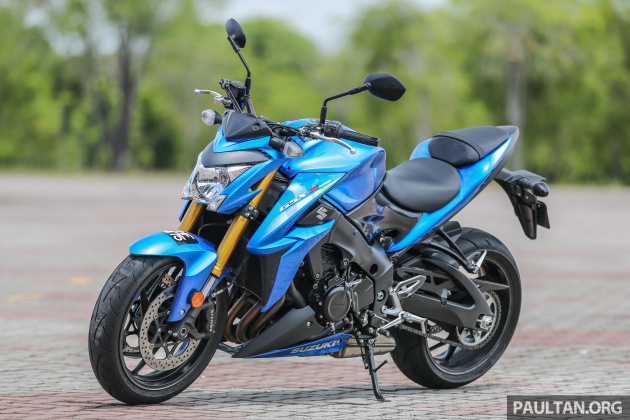

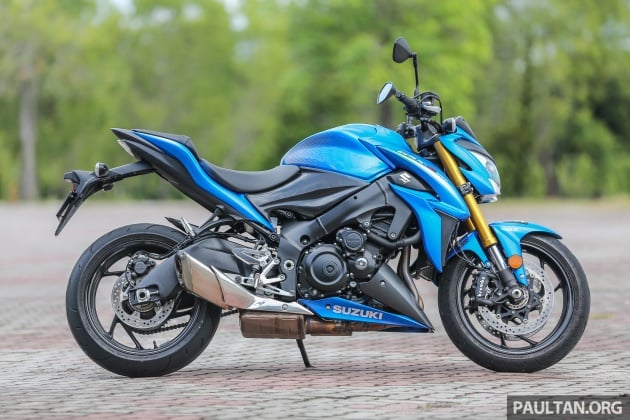



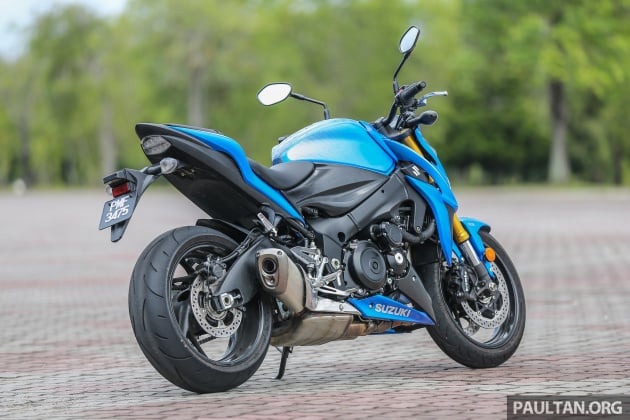
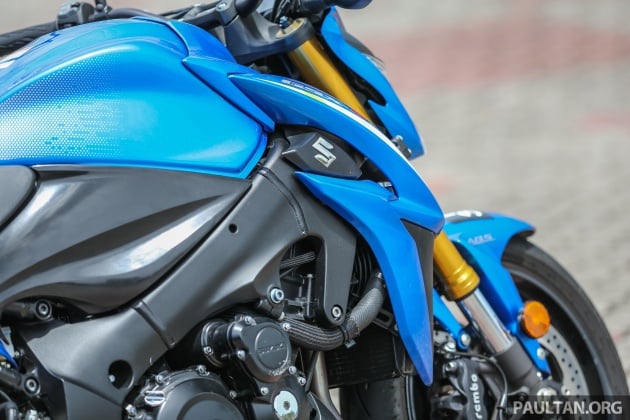
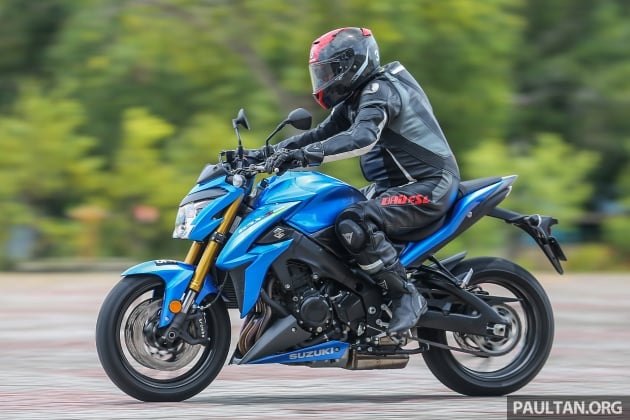



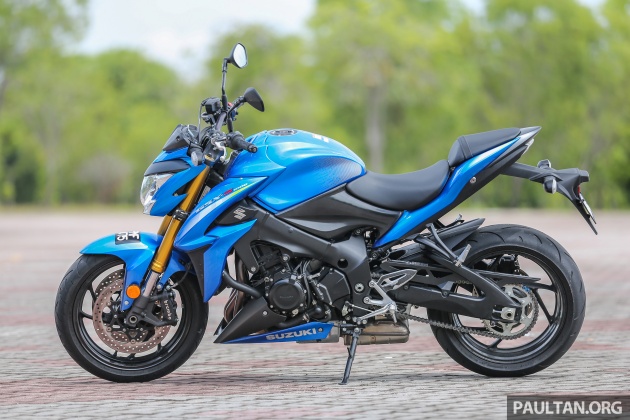
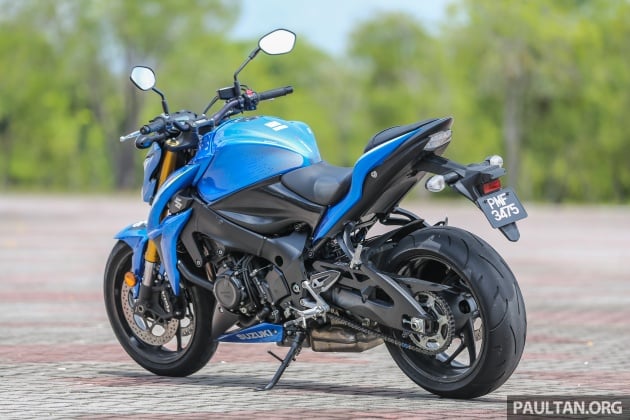






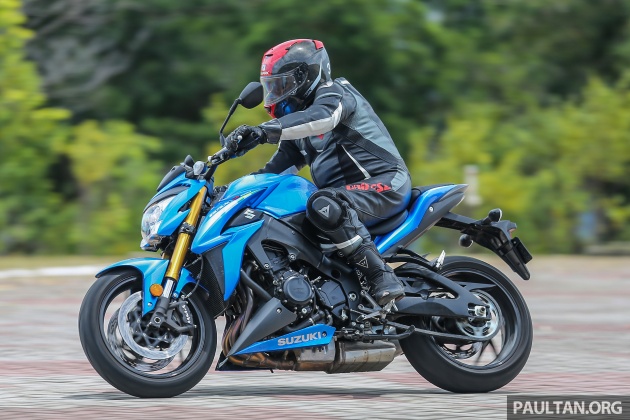
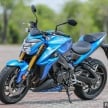
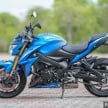
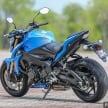

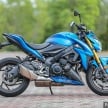
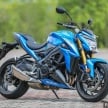
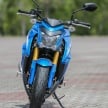
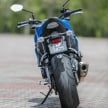
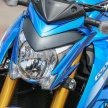
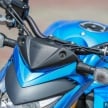
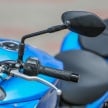
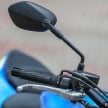

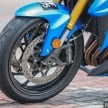
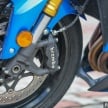

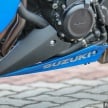
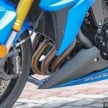
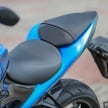
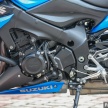
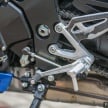
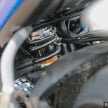
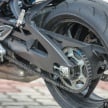
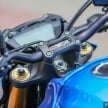
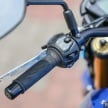
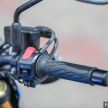
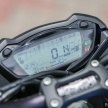
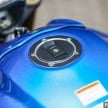
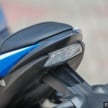
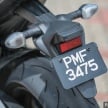
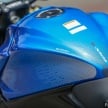
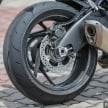
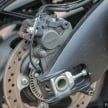
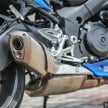
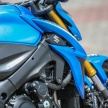
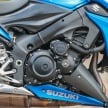
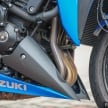
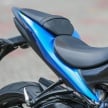
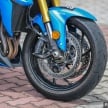
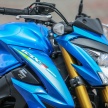
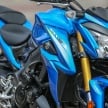
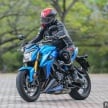
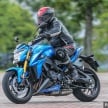
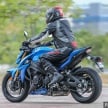
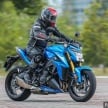
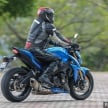
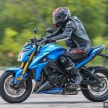
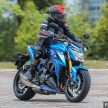
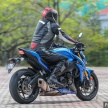
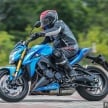



Looks like a good bike to upgrade from z800. CBU with that kind of price is a steal. Please if Mr Mohan read this what’s the fuel consumption?
awesome piece of work.
and thanks for taking us back memory lanes on Suzuki.
I so want to have a suzuki sv650. but I am newbies and have my doubt whether I could handle a 650… let alone a 1000. :(
U can start with Kawasaki er6. A 4 yrs old used unit sells for about 10-15k. Make sure that bike had its health check done by Kawasaki, indicated by a sticker at the tank (stating additional warranty for engine valves). Its FOC. The er6 has a relax riding position and soft comfortable seat, unlike the z800 and z1000. And being a 2 cylinder engine instead of four in line, it is not about top end performance so the rider can have a better control over the bike. Once you get familiar to big bike riding, bike behaviour and maintenance (tyres and chain sets are not cheap) you can upgrade to something more powerful. Bear in mind though naked bikes are not meant for high speed. They are lacking stability like sports and super sports bike as rider is hit by strong wind. Anything more than 160kmh can make the rider dangerously uncomfortable.
To Mohan, this article is nicely written. Well done.
Suzuki Gladius, bro… very nice v-twin machine…
Sv650 is already here, which is a better option than gladius.
Another more potent entry-level Suzuki naked bike is the In-Line 4 cylinder engined Suzuki GSR750..